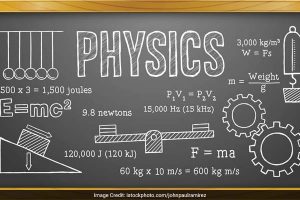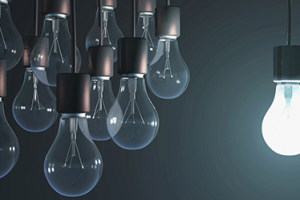Semiconductor Electronics
Semiconductor Electronics is one of the concepts of physics in CBSE Class 12. Before knowing about semiconductors on should know what materials are. In terms of electricity, there are two types of Materials namely, Conductors and non-conductors. Conductors will conduct electricity freely whereas non-conductors acts as insulators, in other words, they are preventing the flow of an electric current. An electric current is made up of the flow of electrons. Some materials have electrons are moving freely like metals but in some material electrons are not able to move freely. Because the electrons are firmly held within their molecules and cannot escape easily. So these type of substances are called as non-conductors or insulators. They include mostly plastics, ceramics, and wood.
Semiconductors are neither a true conductor nor an insulator, but halfway between. A number of materials exhibit this property, and they include germanium, silicon, gallium arsenide, and a variety of other substances.
To understand how it acts as a semiconductor it is necessary to first look at the atomic structure of pure silicon, a good insulator. It consists of a nucleus with three rings or orbits containing electrons, each of which has a negative charge. The nucleus consists of neutrons that are neutral and have no charge, and protons that have a positive charge. In the atom, there is the same number of protons and electrons so the whole atom has no overall charge.


It is easy to see how electrons can move around the lattice and carry a current. However, it is not quite so obvious for holes. This happens only when an electron from a complete orbit moves to fill a hole and leaving a hole where it came from. Another electron from another orbit can then move in to fill the new hole and so forth. The movement of the holes in one direction corresponds to a movement of electrons in the other, hence an electric current.
Semiconductors types / classifications
Semiconductors are mainly classified into two types
- Intrinsic Semiconductors
- Extrinsic Semiconductors
Intrinsic Semiconductors
This type of semiconductor material made to be very pure chemically and it possesses a very low conductivity level having very few number of charge carriers, namely holes and electrons, which it possesses in equal quantities.


Extrinsic Semiconductors
These are those where a small amount of impurity has been added to the basic intrinsic material. This ‘doping’ uses with an element from a different periodic table group and in this way, it will either have more or fewer electrons in the valence band than the semiconductor itself. As a result, it creates either an excess or shortage of electrons. In this way two types of semiconductor are available


- N-type: The N-type semiconductor material has an excess of electrons so free electrons are available within the lattices and their overall movement in one direction under the influence of potential difference results in an electric current flow. The charge carriers are electrons.


- P-Type: In this P-type semiconductor material there is a shortage of electrons, i.e. there are ‘holes’ in the crystal lattice. Electrons may move from one empty position to another and in this case, it can be considered that the holes are moving. It happens under the influence of a potential difference and the holes can be seen to flow in one direction resulting in an electric current flow due to harder for holes to move than for free electrons to move and therefore the mobility of holes is less than that of free electrons. Holes are positively charged carriers.





